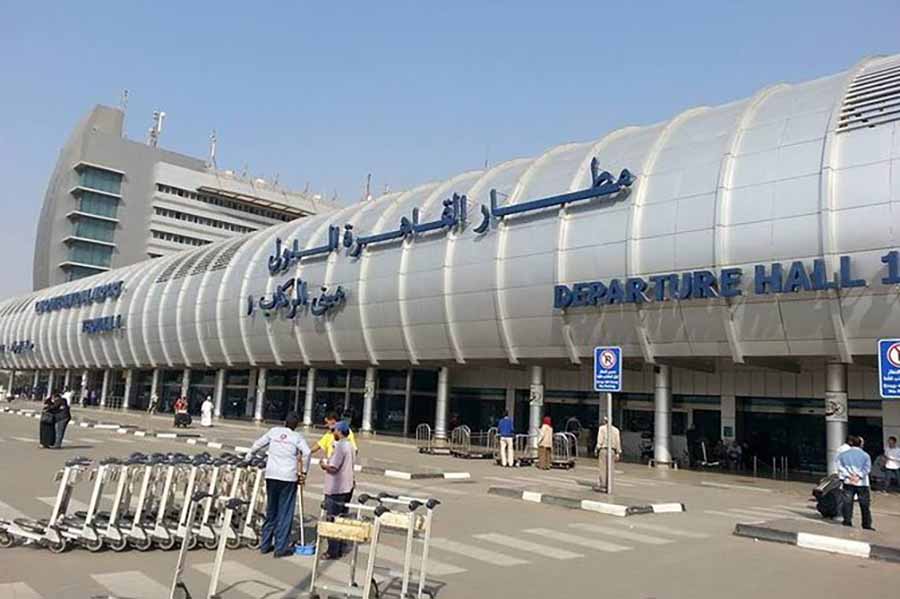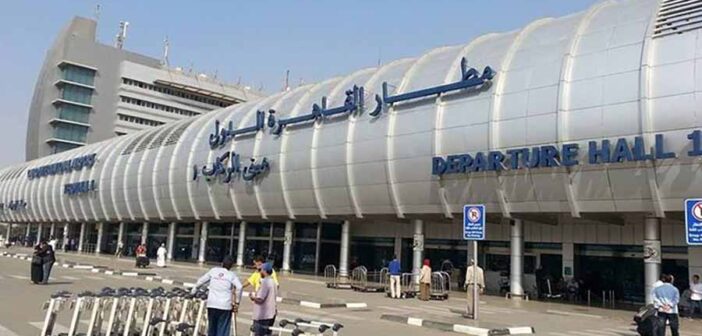
Cairo International Airport (CAI), Egypt’s largest and busiest aviation hub, welcomes nearly 28 million passengers annually, offering a functional gateway to Africa, the Middle East, and Europe. Located 15 kilometres northeast of Cairo’s city centre in Heliopolis, the airport serves over 100 destinations with airlines like EgyptAir, Nile Air, and Star Alliance members such as Turkish Airlines and Lufthansa. With four terminals, including a seasonal facility, the airport provides a manageable experience for travellers despite its high traffic.
Accessing the airport is straightforward, with multiple transport options connecting to Cairo. Public buses, operated by CTA and Mwasalat Misr, depart from Terminal 1’s parking area, taking 35 to 60 minutes to reach downtown areas like Tahrir Square for €0.50 to €3, though luggage space is limited.
White taxis with meters, available outside Terminals 1 and 3, offer a 20-to-30-minute ride to the city centre for €3 to €8, while ride-hailing services like Uber provide similar fares with pre-booked pickups. Car rental agencies, including Avis and Hertz, are located in all terminals, and a multi-storey car park offers rates starting at €2 per hour. The MiniMetro automated people mover connects Terminals 1, 2, 3, and the car park in about five minutes. Passengers should arrive three hours before international flights and two hours before domestic ones to account for security and check-in.
The airport’s layout includes four terminals: Terminal 1 for domestic and regional flights, Terminal 2 for European and Gulf carriers, Terminal 3 for Star Alliance and EgyptAir flights, and a Seasonal Terminal for pilgrimage travel. Terminals 2 and 3 are linked by an air bridge, while a shuttle bus connects Terminal 1, about 2 kilometres away. Each terminal has clear signage, check-in islands, and immigration counters, with Terminal 3 being the largest and most modern.
Security screenings occur at terminal entrances and before gates, which can lead to queues during peak hours, especially in Terminal 1. Baggage claim delays, sometimes due to staffing shortages or outdated equipment, may occur, so passengers should check flight information displays or the airport’s website for updates.
Dining and retail options are plentiful, particularly in Terminal 3’s 5,000-square-metre retail space. Duty-free shops by Heinemann, located in all terminals, offer souvenirs, luxury goods, and a unique Perfume Souq with Middle Eastern fragrances. Restaurants range from fast-food outlets like McDonald’s to sit-down venues serving Egyptian and international cuisine, with prices like €5 for a meal. Cafes such as Starbucks and Segafredo are open 24/7. Lounges, including EgyptAir’s Gienah and Alitoth in Terminal 3 and Saudia’s Al-Fursan in Terminal 2, provide Wi-Fi, snacks, and showers for €35 to €40, accessible via Priority Pass or airline status. Crowding in dining areas during peak times can be an issue, so eating before security is advisable.
Facilities support traveller needs with free Wi-Fi across all terminals, though connections may slow during busy periods. Charging points, ATMs, currency exchange, and luggage wrapping are available, but luggage storage is limited to nearby hotels like Le Meridien, connected to Terminal 3 by a pedestrian bridge. Accessibility features include ramps, lifts, and assistance services bookable 48 hours in advance. Other amenities include prayer rooms, a pharmacy, and baby-changing facilities, though seating can be scarce in Terminal 1. Business centres in Terminal 1 offer fax and computer access.
On-time performance is generally reliable, with Terminal 3’s advanced air traffic control system reducing delays by over 15%. Disruptions often stem from airline-specific issues, such as equipment problems, or weather conditions like sandstorms. Passengers can monitor updates via Flightradar24 or in-terminal screens. As a major hub, Cairo facilitates connections, with minimum transfer times of 40 to 60 minutes within the same terminal and 60 to 80 minutes between terminals. Airside transfers are possible, but Terminal 1 connections may require shuttle buses, and non-Schengen passengers could face delays at immigration due to manual checks. Those on separate tickets should confirm luggage transfer policies.
Cairo Airport’s ongoing renovations, including Terminal 1 upgrades and a forthcoming Terminal 4, aim to enhance passenger comfort. While challenges like crowded security checks and limited seating persist, the airport’s transport links, modern facilities, and dining options ensure a practical experience for travellers passing through Egypt’s capital.
Egyptair
Egyptair operates direct flights to Ireland (primarily Dublin) from Terminal 3 at Cairo International Airport, their main hub for international operations. Check-in is handled in the dedicated Egyptair area with counters in Terminal 3 (islands 1-6, counters 1-110) nd gates in the international piers.
Check-in opens 3 hours before departure and closes 60 minutes prior for international flights. Self-service kiosks (CUSS) available; bag drop after online check-in (24 hours prior). For Dublin flights, expect counters in the Star Alliance section.
Gates are assigned dynamically; for EU destinations like Ireland, commonly gates 10-20. Boarding starts 30-45 minutes before departure; gates close 20 minutes prior. Confirm via Egyptair app or airport screens.




